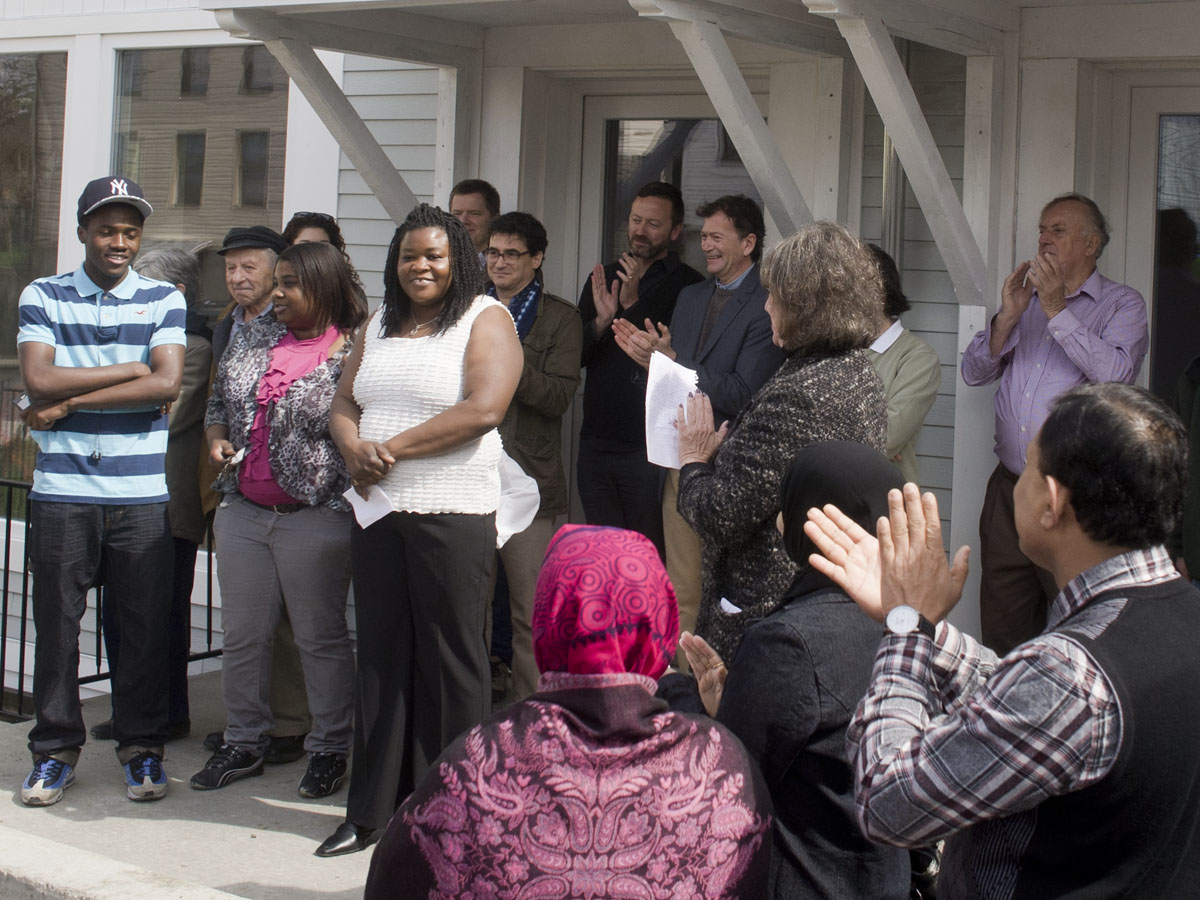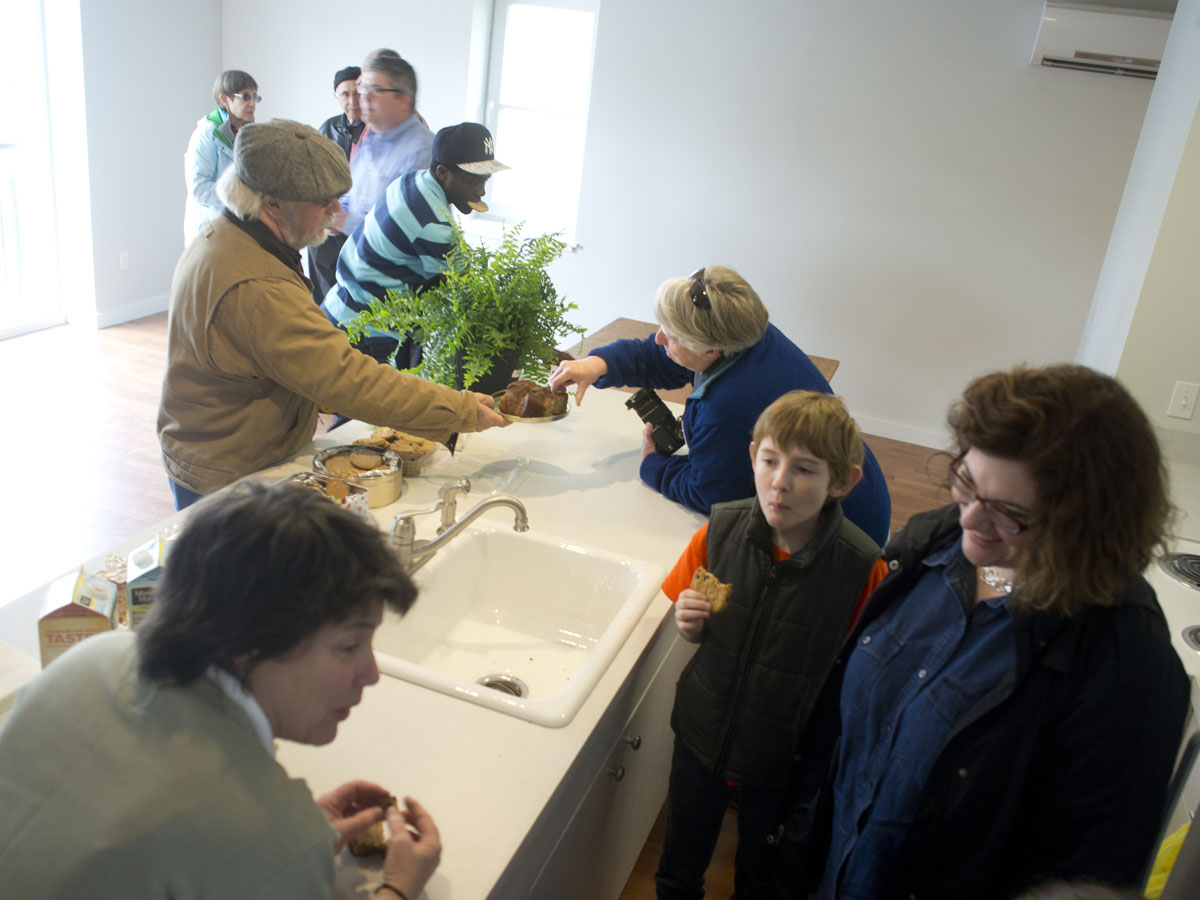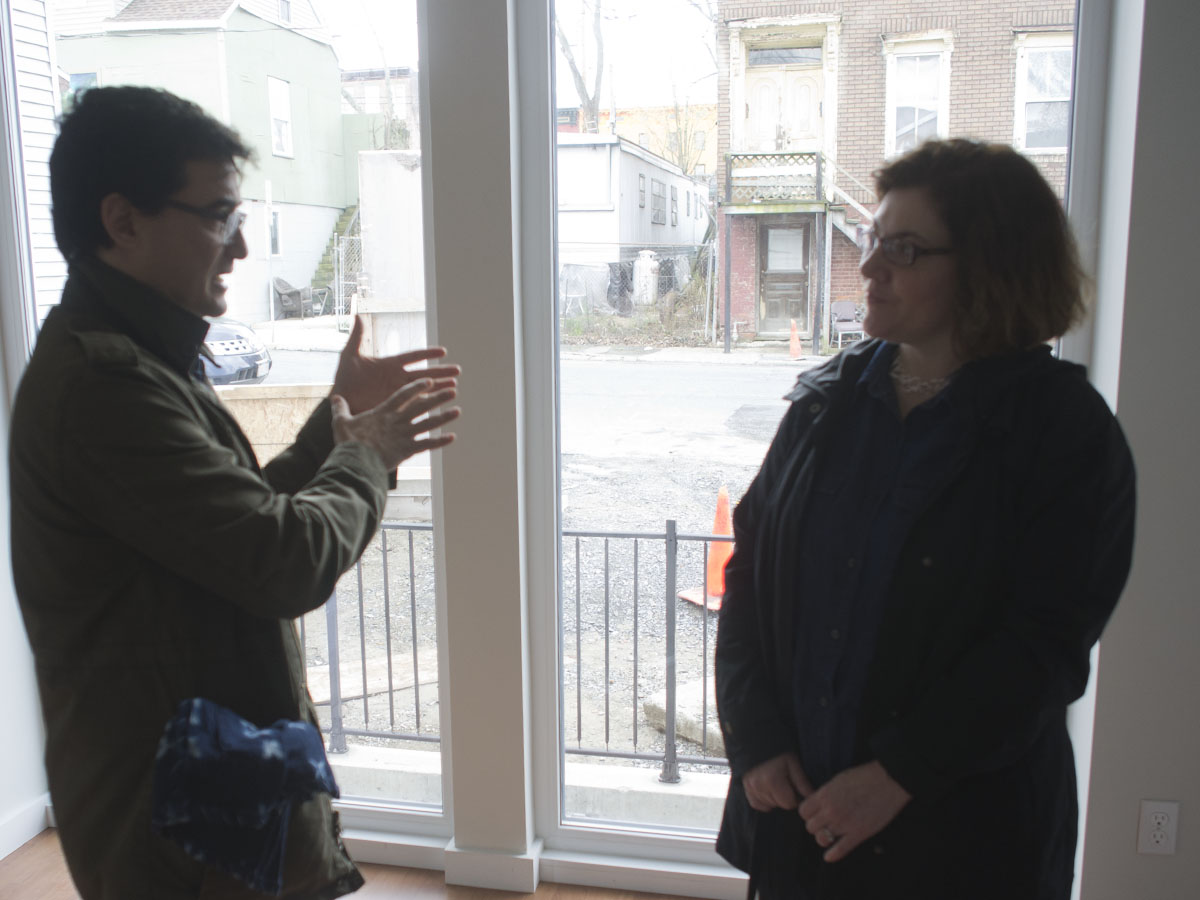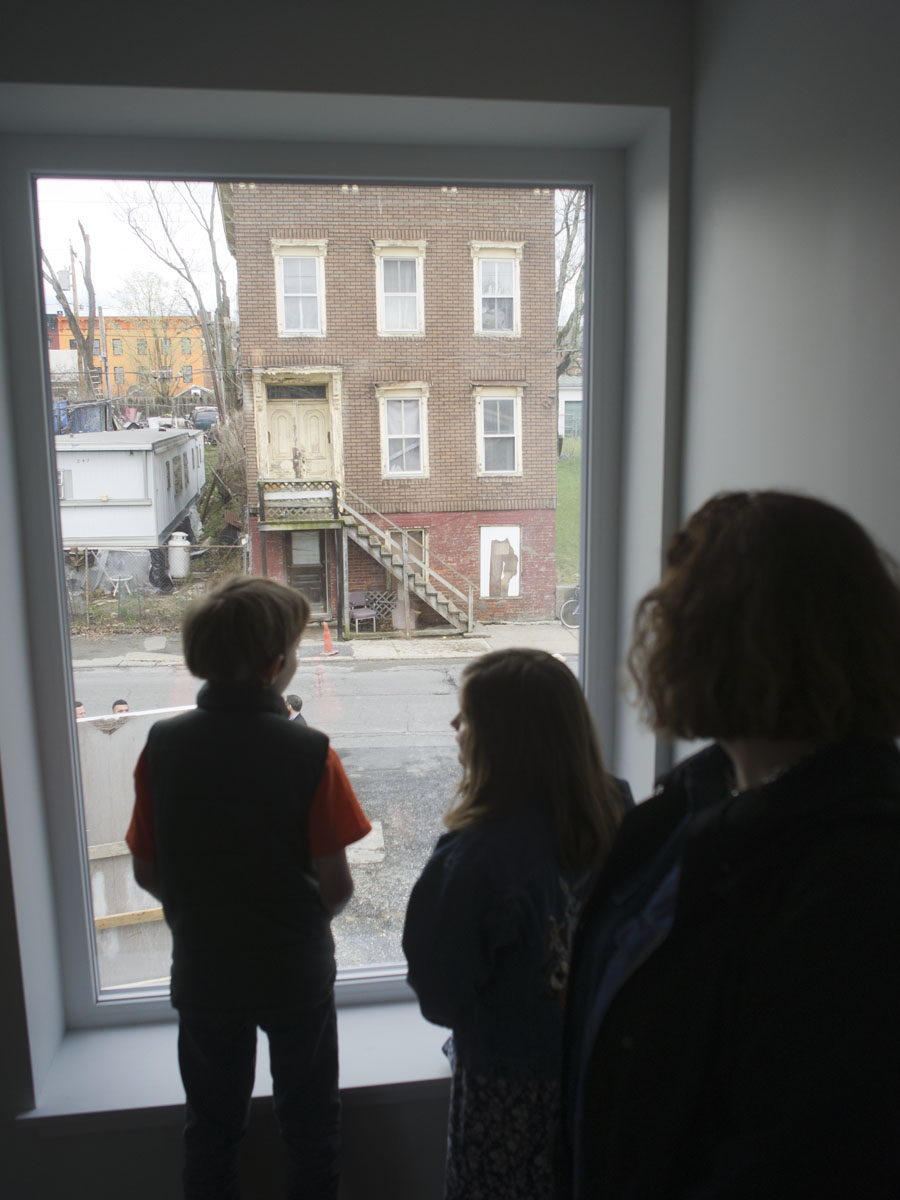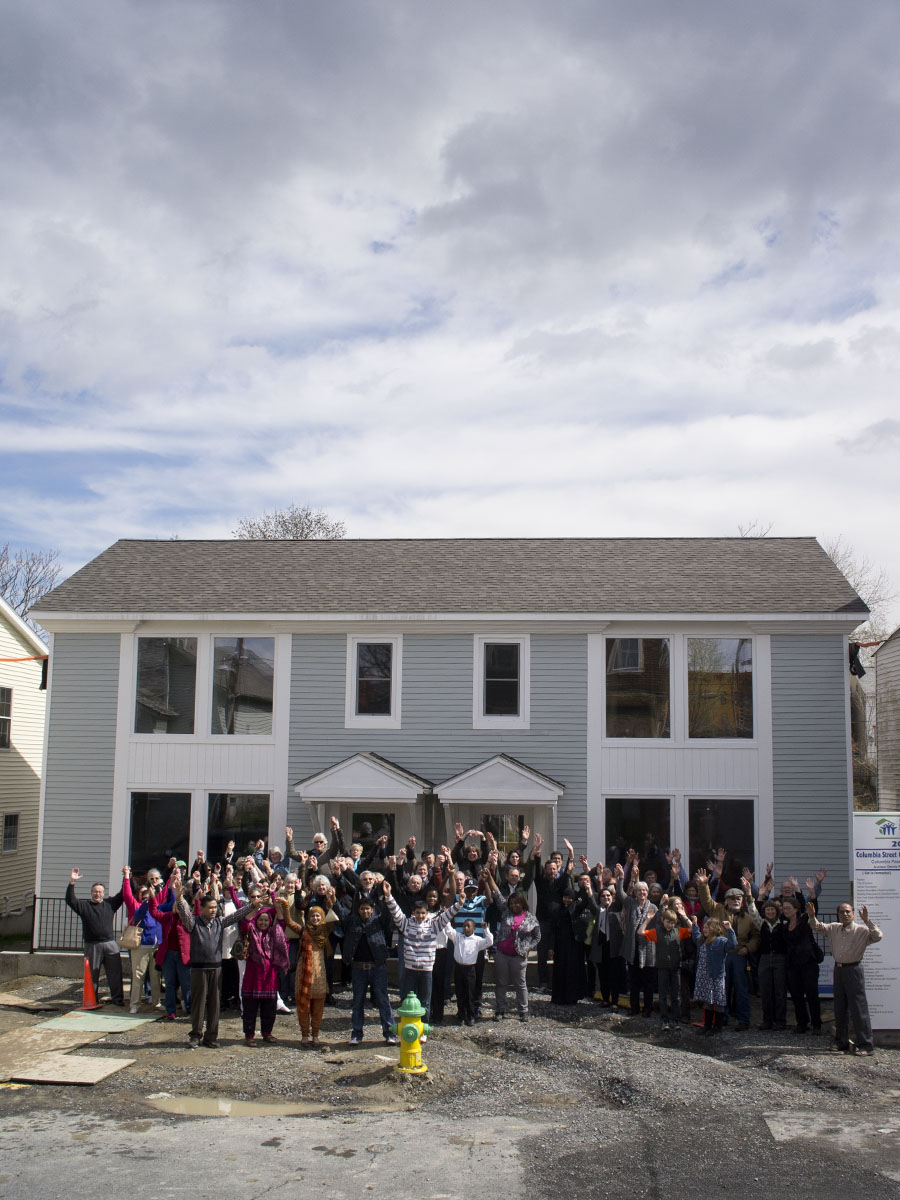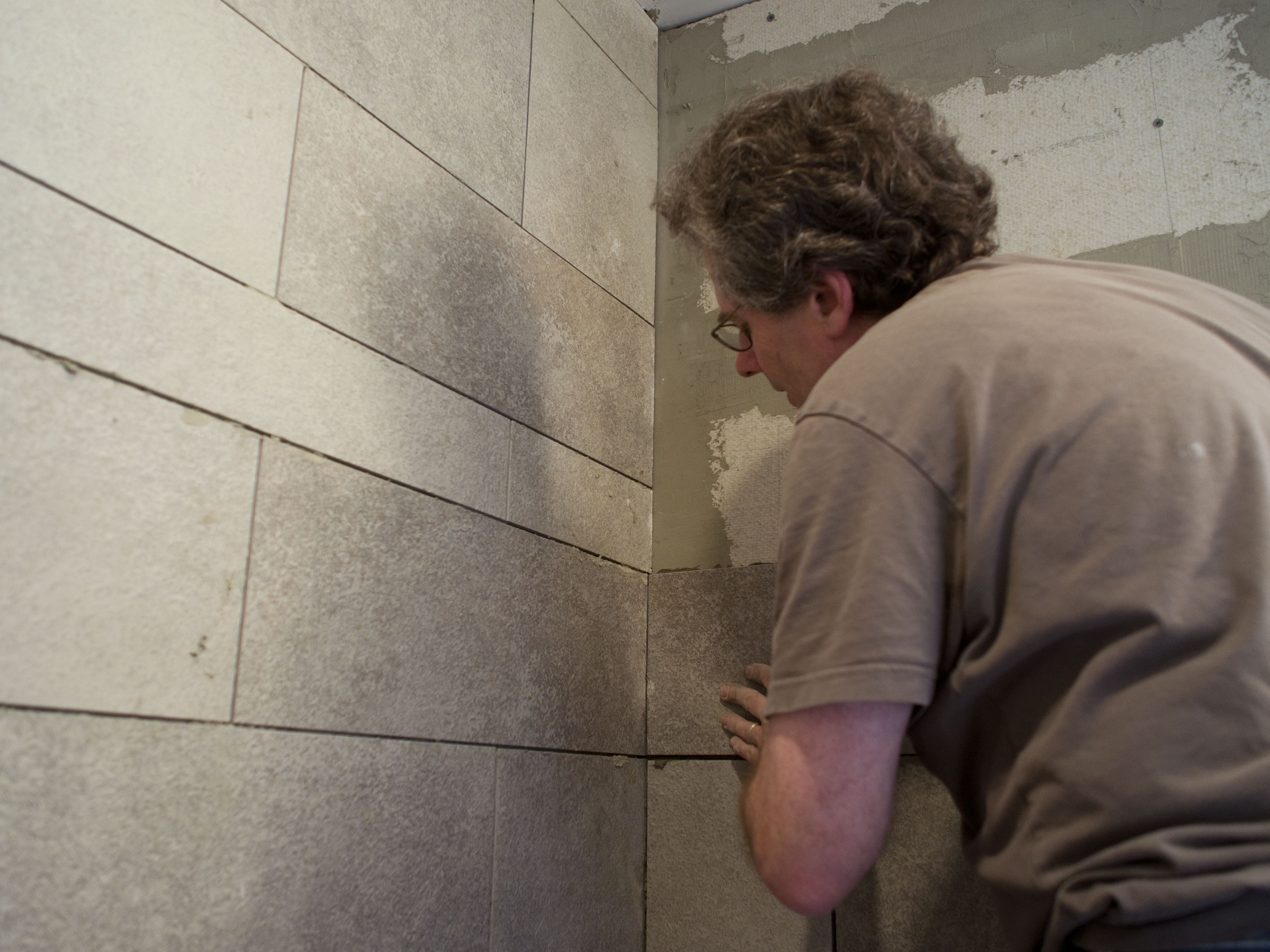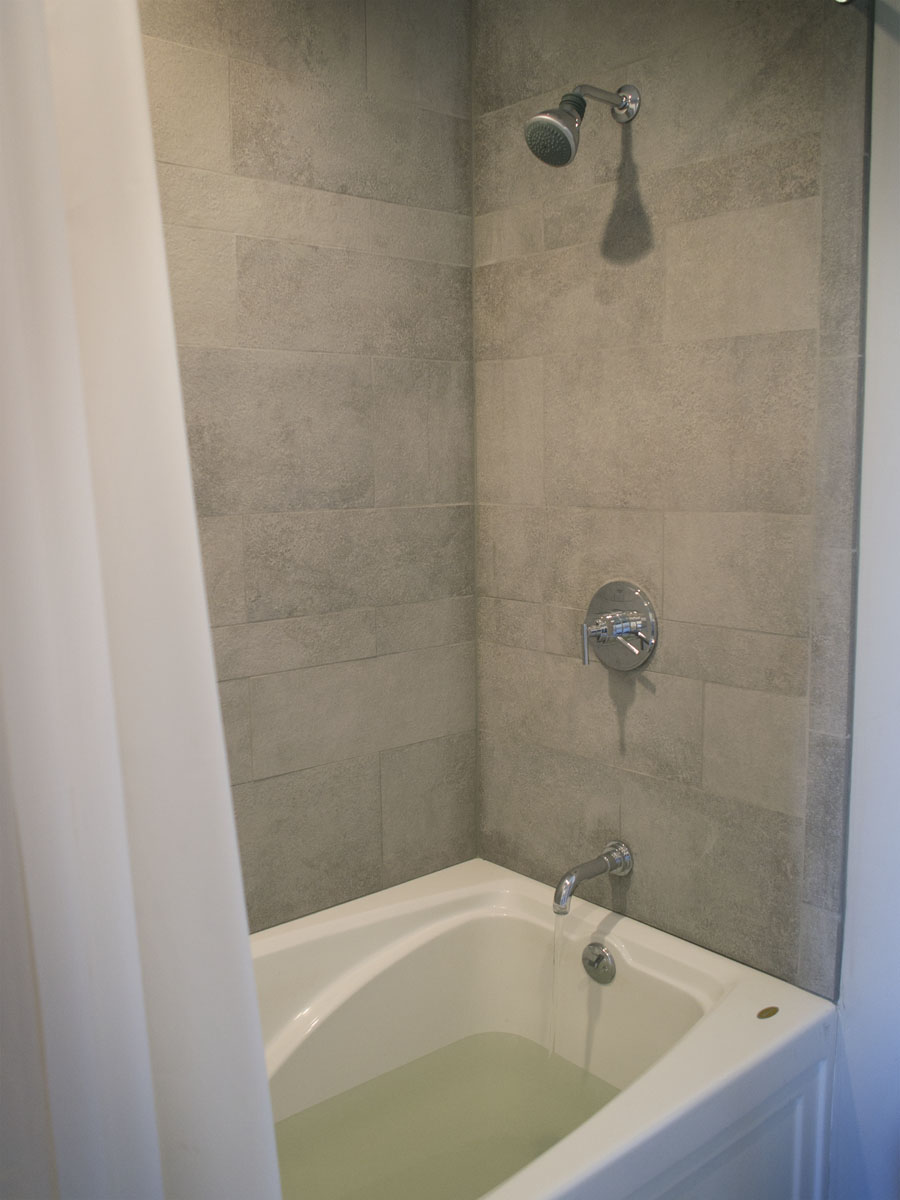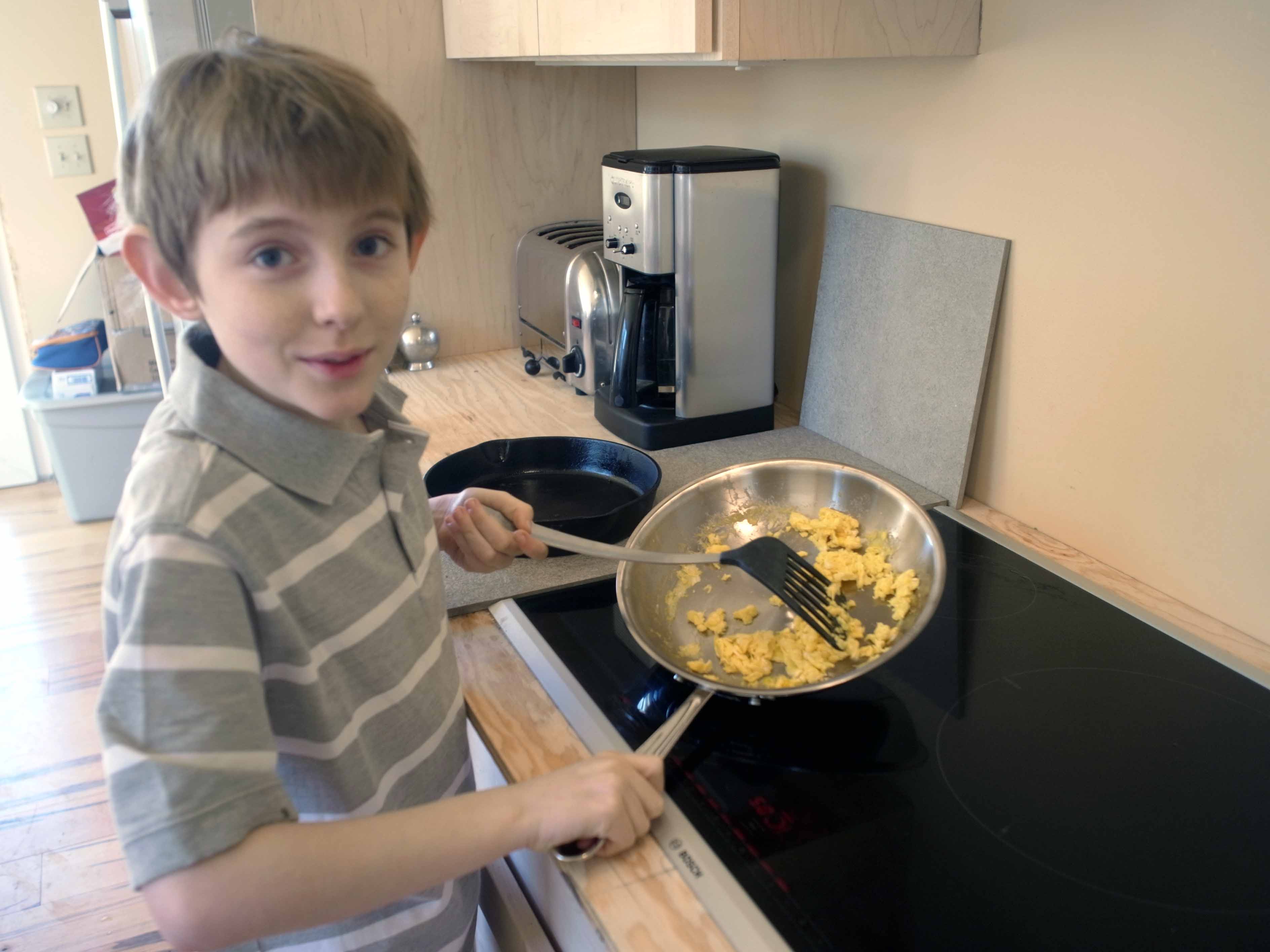



 Many of our household items packed away in a storage container during the build were not needed and not missed. We set up a table at the barn sale in North Chatham to lighten up, and make a few dollars.
Many of our household items packed away in a storage container during the build were not needed and not missed. We set up a table at the barn sale in North Chatham to lighten up, and make a few dollars.
Saturday house tours
We visited two wildly different green building projects yesterday and discovered they have a lot in common: heat recovery ventilation, high R-value insulation, high quality windows, open plan living and fresh white paint.
10:30 a.m., Hudson: Dedication of the Columbia Passive Townhouses built by the volunteers of Columbia County Habitat for Humanity. Read more >
1:00 p.m., Copake: Tour of New York’s first Breezehouse, an eco-friendly house built on a steel frame in Blu Home’s California factory. Read more >
Touring a Blu Homes Breezehouse
Several years ago, when this company was still very young, we considered building a Blu home. We liked the precision and control of a factory-built product, and this brand sounded smart and high-quality. The illustrations on the website inspired modern-design-envy but not sufficient confidence (by now they showcase many completed homes). In our experience as first-time home builders, we can say that a house tour makes all the difference.
So, barely a month living in our brilliant new Passive House, we headed East out of Hudson on Route 23, to see the first Blu Homes Breezehouse in New York State. It was absolutely fabulous. Every room felt light and right, every green decision made sense, and every question we had was answered by a knowledgeable sales rep. It felt good to know that a steel frame supported those well-insulated walls and SIPs roof. It looked as chic as the crowd that came to visit this 2,320 sq ft home with 22 acres and a beautiful hilltop view, priced at $1.6 million.
Passive townhouses by Habitat
The crowd gathered in Hudson this sunny Saturday morning included some familiar faces. “That man looks like the nicest and most happiest to be here,” said our 8-year-old, nodding towards Dennis Wedlick. Dennis volunteered the services of BarlisWedlick Architects to design the Columbia Passive Townhouses for Columbia County Habitat for Humanity. The event was to dedicate the townhouses, which were built by Habitat volunteers alongside the future owners: families from Bangladesh and Haiti who each invested 300 hours in construction. We met Dennis, Alan, Liza, Mark and Jason of BarlisWedlick at this event just a block or two from their Hudson Studio. If Habitat aims to create community as well as housing, this was our connection.
Elements of the townhouses made us feel right at home – the same Intus windows and doors, thick walls, how the kitchen opens onto the living and dining areas, the HRV and heat pump. The dove grey walls and white trim are so lovely that said 8-year-old was reconsidering her choice of turquoise at home.
We’ve volunteered to help Habitat create a users’ manual for the HRV which, if anything like ours, lacks decent directions. Fortunately, it’s easy to use: Press speed 2 and leave it alone mostly; Press the Clock symbol for a 10-minute boost to speed 3 when the bathroom or kitchen needs extra ventilation. Set the heat pump on automatic. Clean all filters once a month or more in pollen season.
Painting the kitchen cabinets



 We purchased unfinished cabinets and painted them to match the glu-lam beams. Chris has always preferred a brushed finish to something slick from the factory. Many, many hours later, he is pleased with the result, which seems softer and older and perhaps more like a painted Shaker cabinet. He special-ordered Benjamin Moore Advance paint in Cork. The product promises to deliver oil-like durability in a water based paint. Prime first with Fresh Start. Tips: Advance paint sets up so quickly that Chris thinned it and did multiple layers, sanding between layers when dry. By the way, you waive your warranty with Thomasville when you go for “unfinished” and when we met the rep in Home Depot one day he urged us to paint every surface very soon after installation to protect the wood. Then, at my request, he printed out the company’s statement about membership in the KCMA Environmental Stewardship Program.
We purchased unfinished cabinets and painted them to match the glu-lam beams. Chris has always preferred a brushed finish to something slick from the factory. Many, many hours later, he is pleased with the result, which seems softer and older and perhaps more like a painted Shaker cabinet. He special-ordered Benjamin Moore Advance paint in Cork. The product promises to deliver oil-like durability in a water based paint. Prime first with Fresh Start. Tips: Advance paint sets up so quickly that Chris thinned it and did multiple layers, sanding between layers when dry. By the way, you waive your warranty with Thomasville when you go for “unfinished” and when we met the rep in Home Depot one day he urged us to paint every surface very soon after installation to protect the wood. Then, at my request, he printed out the company’s statement about membership in the KCMA Environmental Stewardship Program.
Freebie cabinet becomes a vanity
Tiling the master bath
Six Passive Projects
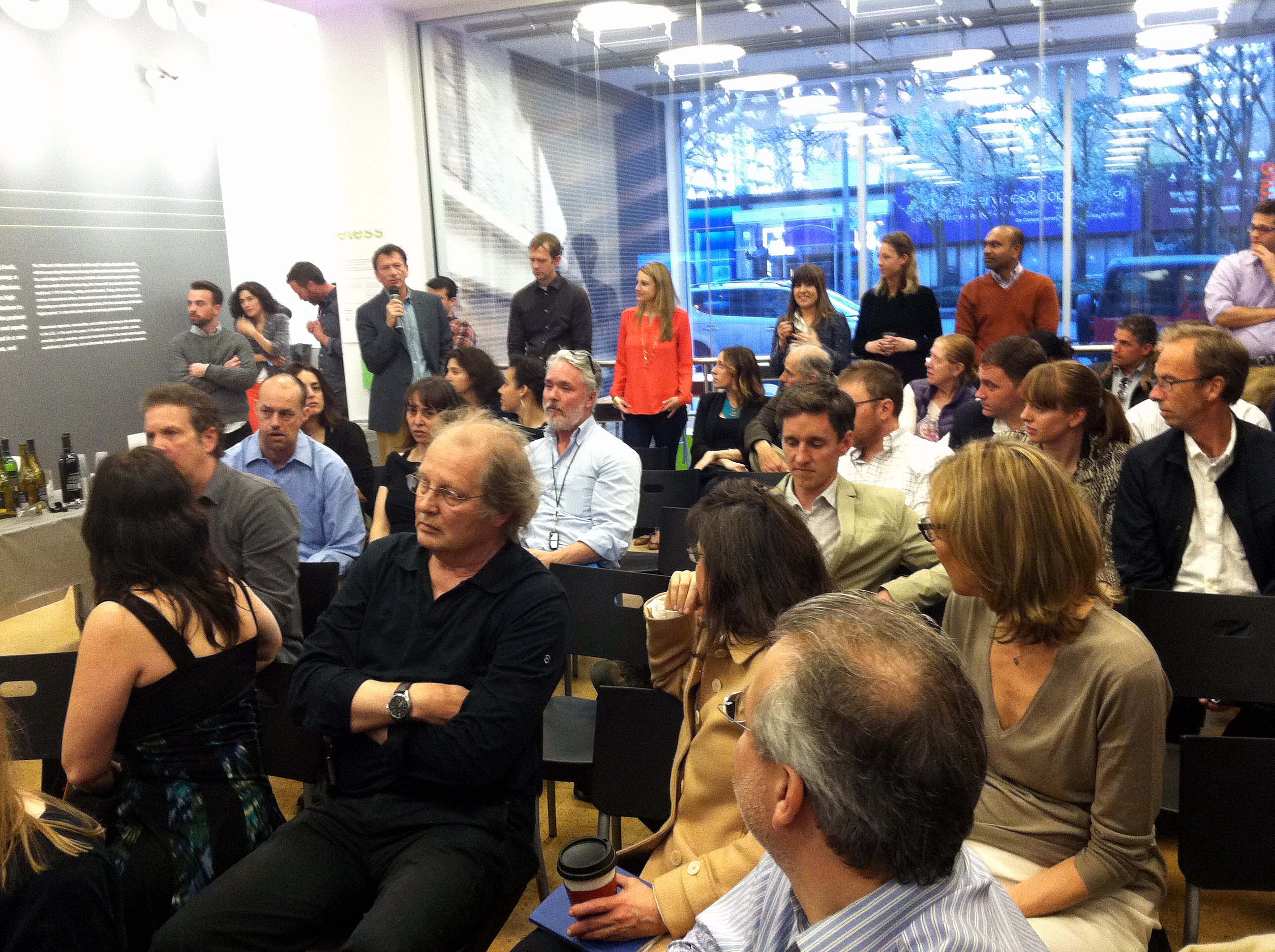 What’s going on in Columbia County? Six very different building projects are applying the world’s highest energy standard under the care of BarlisWedlick Architects in a rural upstate New York community where kids raised on apple orchards and dairy farms attend schools with names like Ichabod Crane. BarlisWedlick presented the six projects at an event organized by New York Passive House April 17th at the Center for Architecture in Manhattan.
What’s going on in Columbia County? Six very different building projects are applying the world’s highest energy standard under the care of BarlisWedlick Architects in a rural upstate New York community where kids raised on apple orchards and dairy farms attend schools with names like Ichabod Crane. BarlisWedlick presented the six projects at an event organized by New York Passive House April 17th at the Center for Architecture in Manhattan.
Who’s behind this hotbed of Passive House activity? Visionaries who invested in a spec house/research project, the head of a nonprofit organization providing low-income housing, the owner of a private company seeking healthy office space, the Pastor of a church to be sited north of Kinderhook, homeowners midway into transforming a 150-year old barn, and homeowners on the verge of Passive House certification (that’s us). Each one of the projects was represented in person – including ours, because Susan took the day off while Chris remained on Daddy Duty and painted the kitchen cabinets. It was a chance to look beyond our four (R-49) walls to the larger Passive House community. Shared objectives among the projects include energy efficiency, comfort and air quality.
Mailbox: Marking one year since we broke ground
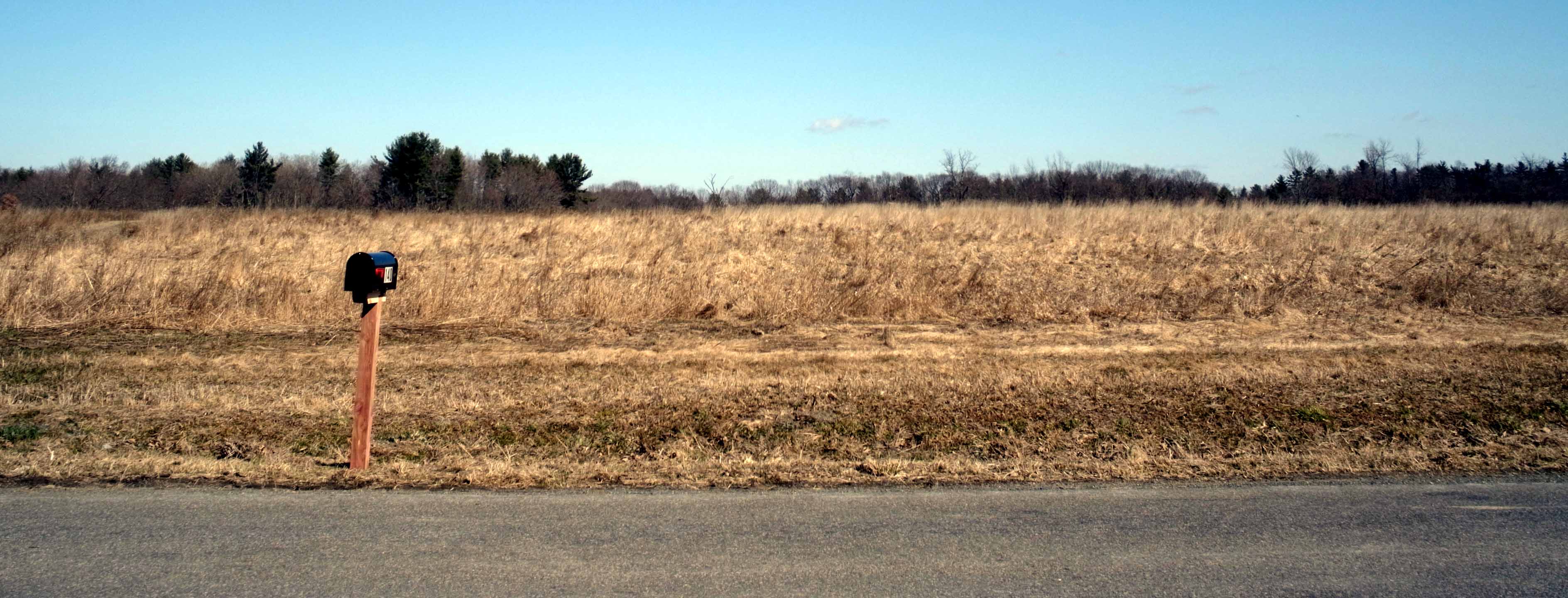
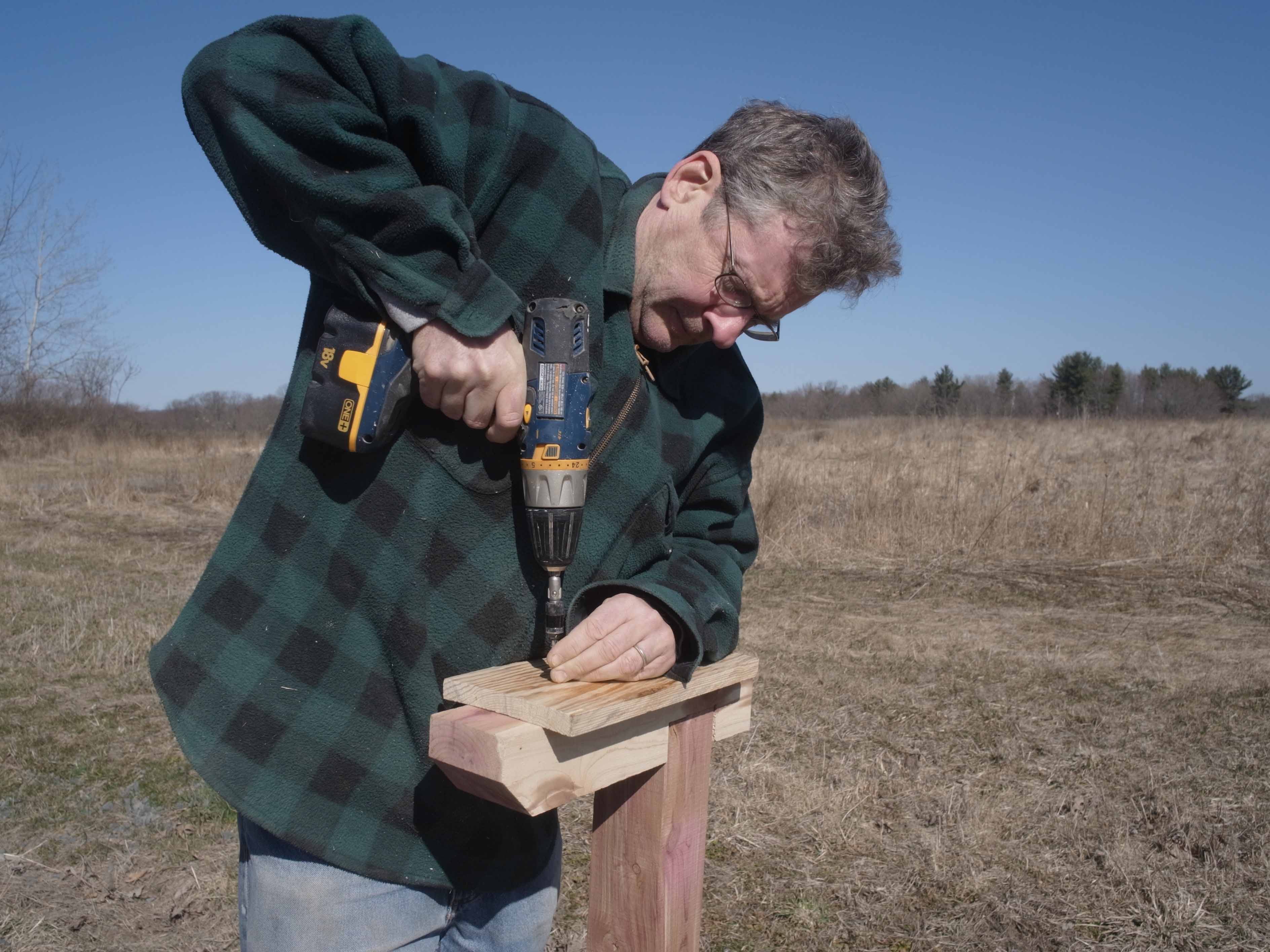 We broke ground one year ago today so the installation of the mailbox is now a grand symbolic event marking how far we’ve come. Nicholas was asking today if we’d ever again see Nick Ford and Al and Adam and the guys who built the house. Lily was asking for a dog. Chris and I are reflecting on the passage of time. The bullet points of this three-year journey: rennovating our 1880s home in Rhinecliff, selling so quickly, living in a hotel for six weeks to finish school in Rhinebeck, renting a drafty old rambler in Valatie for 11 months, adjusting to a new school district, doubling-up with my parents next door for 10 months, and moving into our dream house just two weeks short of a year since Ted Bombola and his backhoe broke ground. I am ridiculously pleased to see our mailbox standing tall at the end of the drive, ready for Peggy the postmistress to deliver letters containing good news only.
We broke ground one year ago today so the installation of the mailbox is now a grand symbolic event marking how far we’ve come. Nicholas was asking today if we’d ever again see Nick Ford and Al and Adam and the guys who built the house. Lily was asking for a dog. Chris and I are reflecting on the passage of time. The bullet points of this three-year journey: rennovating our 1880s home in Rhinecliff, selling so quickly, living in a hotel for six weeks to finish school in Rhinebeck, renting a drafty old rambler in Valatie for 11 months, adjusting to a new school district, doubling-up with my parents next door for 10 months, and moving into our dream house just two weeks short of a year since Ted Bombola and his backhoe broke ground. I am ridiculously pleased to see our mailbox standing tall at the end of the drive, ready for Peggy the postmistress to deliver letters containing good news only.
First food with induction cookware
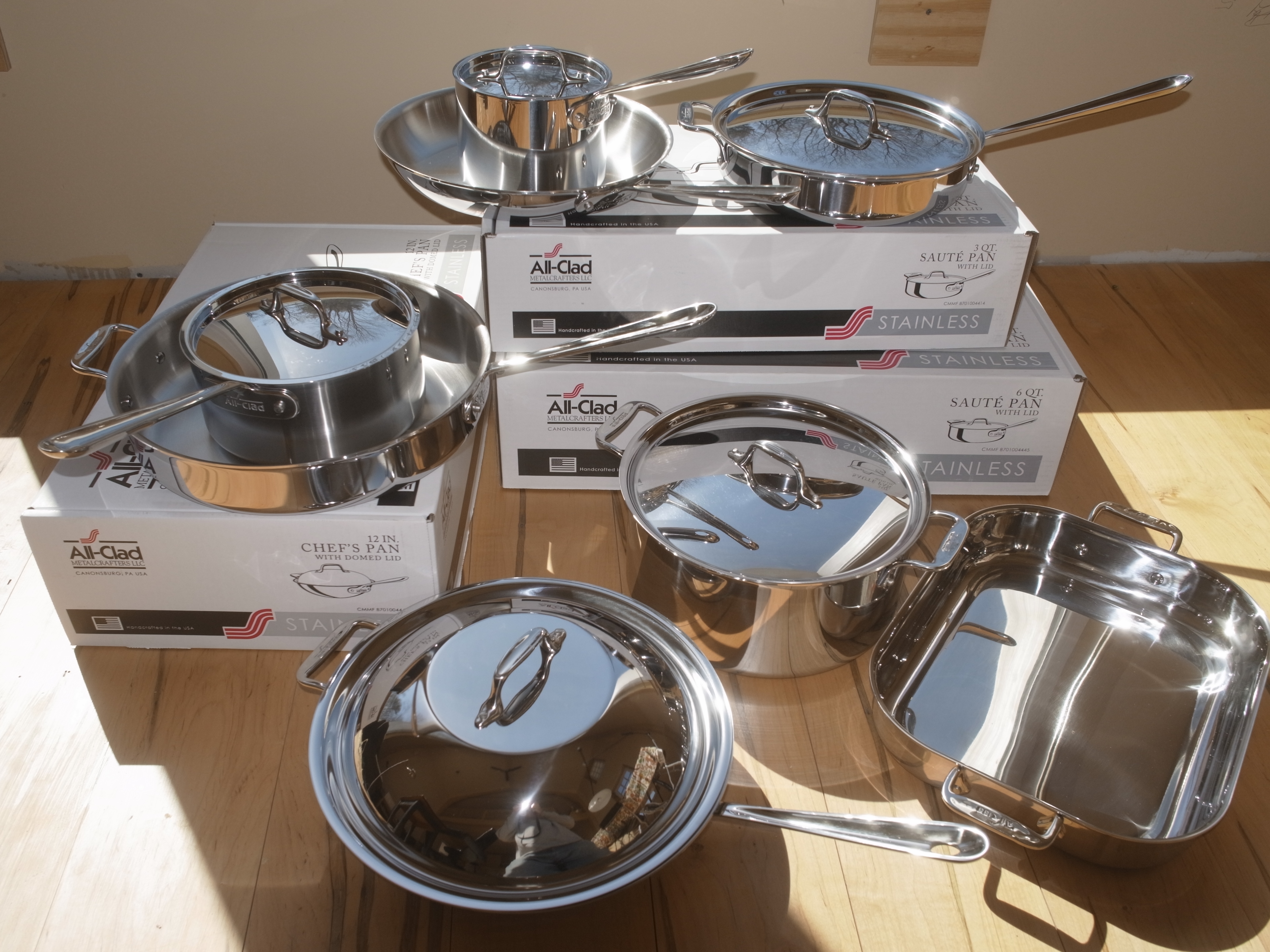 Here is a video about how induction works >
Here is a video about how induction works >
Straight from the box, the new induction-safe frying pan is put to the test by Nicholas. It’s April 4th, the day we broke ground one year ago, and he’s thrilled to be the first to use the new pots and pans. Because we have a new induction cooktop, we needed to buy new cookware that is magnetic and has a very flat bottom. Our four old and somewhat lumpy non-magnetic stainless pots had to be replaced. We choose All-Clad Tri-Ply Stainless Steel (without the non-stick coating), hoping they last forever. Less pricey Tramontina Tri-Ply receives rave reviews, and cast iron also works very well.
The smooth and shiny black ceramic cooktop is quite a change from our Viking dual fuel range. Induction cooking uses the transfer of magnetic energy, rather than a flame or electric element, to create a quick and efficient way of cooking. Water boils almost instantly, pots stay mostly cool and temperature is easily controlled. A typical induction cooktop is 84 percent efficient, while a gas range is only 40 percent efficient, according to the U.S. Department of Energy.













